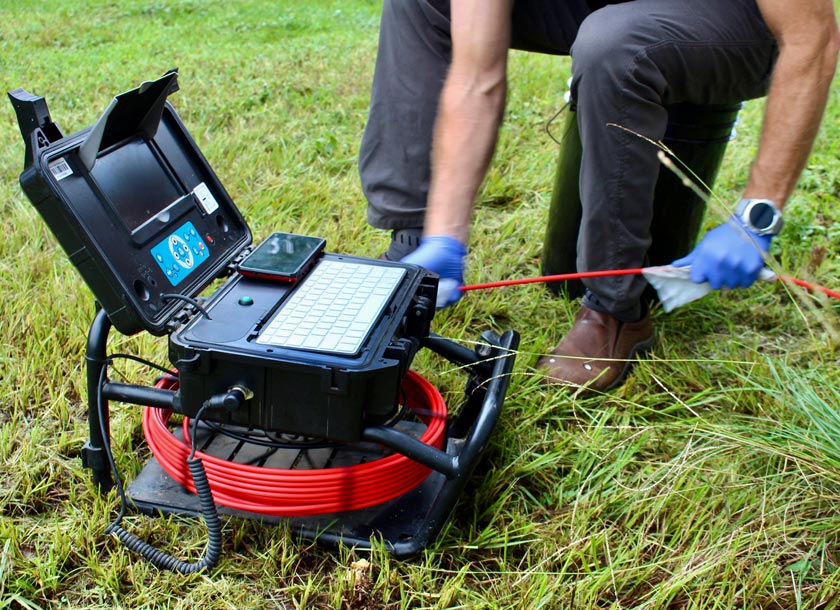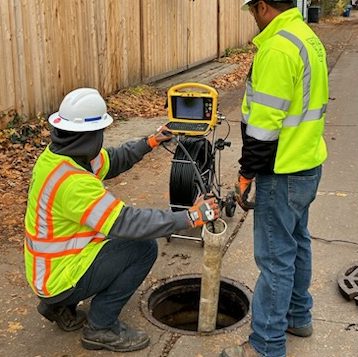Typical Sewer Line Troubles and Their Solutions: A House owner's Handbook

Tree Origin Breaches
Tree root breaches are a considerable and usual issue influencing sewage system lines. As trees expand, their origins normally seek resources of water and nutrients. Sewer pipes, particularly older ones constructed from clay or other porous materials, provide an eye-catching target. Gradually, roots can penetrate small splits or joints in the pipelines, causing blockages and at some point triggering considerable damages. This intrusion can result in slow drainage, sewer back-ups, and also complete pipe failing if left unaddressed.
Routine examinations utilizing video camera technology can recognize origin presence before it ends up being an extreme problem. For an extra long-term remedy, chemical origin killers can be used to inhibit further development within the pipes. In severe instances, pipe relining or substitute might be needed to restore the stability of the drain line.
Applying preventive steps, such as planting trees away from drain lines and making use of root barriers, can reduce the risk of future invasions, therefore securing the capability of your sewer system.
Pipeline Rust
Corrosion in sewer pipelines is a prevalent issue that can badly endanger the integrity and functionality of a sewer system. Normally happening in steel pipes, such as cast iron or galvanized steel, deterioration arise from extended direct exposure to moisture, chemicals, and various other corrosive representatives found in wastewater. Over time, this process compromises the pipe wall surfaces, bring about leakages, breaks, and at some point, pipe failure.
The main sorts of pipe deterioration include uniform corrosion, where the entire surface area of the pipeline corrodes evenly, and local deterioration, such as pitting or hole rust, which impact specific areas of the pipeline. Identifying the early indications of rust, such as blemished water or uncommon smells, is vital for prompt treatment.
Preventing pipe corrosion entails routine maintenance and evaluations. Using protective coverings, making use of corrosion-resistant products like PVC or polyethylene, and setting up cathodic protection systems can dramatically extend the lifespan of sewer pipelines. In situations where deterioration is already comprehensive, trenchless pipe rehabilitation techniques, such as pipe lining or pipeline bursting, offer effective solutions without the requirement for extensive excavation. Ultimately, positive administration and timely fixings are necessary to reduce the damaging effects of pipeline deterioration on sewage system systems.
Clogs and blockages
Blockages and obstructions are amongst one of the most typical and turbulent issues influencing sewer lines. These blockages can occur from a variety of sources, including the accumulation of debris such as food, grease, and hair fragments, as well as the invasion of tree roots looking for dampness. In time, these materials accumulate, narrowing the pipeline and eventually causing complete blockages that can trigger wastewater to back up right into homes.
Safety nets are essential for mitigating the threat of blockages. Regular maintenance, such as periodic hydro-jetting and the usage of enzyme-based cleaners, can help keep pipes clear of debris. Home owners must additionally be conscious of what they take care of down their drains pipes; preventing grease, coffee premises, and fibrous vegetables can considerably lower the chance of obstructions.
When clogs do occur, expert treatment is usually called for. Plumbing technicians might utilize a selection of tools, such as augers (additionally known as drain snakes) and high-pressure water jets, to damage up and get rid of the blockage. In more serious cases, video evaluation tools can be utilized to identify the trouble and situate, making certain that the suitable option is used successfully. Normal examinations and prompt interventions can help maintain the integrity and performance of sewage system lines.
Leaking Drain Lines
Beyond blockages and blockages, dripping drain lines provide a considerable worry for house owners and districts alike. These leakages can result from different variables, consisting of pipe deterioration, shifting dirt, intrusive tree roots, and tear and wear over time. Left unaddressed, dripping sewer lines can cause substantial residential property damage, promote mold and mildew growth, and present significant wellness threats due to the contamination of groundwater and soil.

Repair methods rely on the intensity of the leak and the condition of the sewage system line. Small leaks may be settled with trenchless repair techniques, such as pipe lining or pipeline bursting, which are much less intrusive and quicker to complete. In more serious instances, typical excavation and replacement of the affected pipe area may be required. Consulting with a qualified plumbing technician guarantees a precise medical diagnosis and appropriate service to alleviate the issue properly.
Sewage System Line Bellies
When it useful site concerns sewage system line issues, one especially challenging issue is the development of sewage system line stomaches. A sewage system line belly happens when an area of the pipe droops or dips, producing a low place where waste and debris can collect. This can bring about slow drain, reoccuring blockages, and prospective damages to the pipeline in time.
The root causes of sewage system line stomaches are varied. Poor installation methods, soil disintegration, ground settling, or changes due to temperature modifications can all add to the formation of these droops - sewer line inspection ct. Recognizing a drain line stubborn belly usually Homepage calls for a professional inspection utilizing a drain electronic camera to pinpoint the exact location and extent of the problem
Attending to a sewage system line stubborn belly commonly entails excavation to get to the damaged pipeline section. When accessed, the sagging part might require to be changed or repositioned to ensure appropriate slope and drain. In some instances, trenchless repair work techniques, such as pipe lining or pipeline bursting, can be used to reduce disruption while resolving the issue.
Preventative measures, including regular inspections and guaranteeing proper installment, can assist alleviate the threat of drain line stomaches. Home owners need to continue to be vigilant for signs of drainage issues and seek specialist help at the first sign of difficulty.
Conclusion
To conclude, attending to common sewage system line issues such as tree root breaches, pipe corrosion, clogs, dripping drain lines, and drain line stomaches is essential for preserving a practical and efficient system. Early detection through video assessments and the execution of both permanent and short-term solutions can alleviate these issues effectively. Regular upkeep practices, consisting of hydro-jetting and calculated tree positioning, further add to the prevention of these troubles, thereby making certain the long-lasting stability of sewage more helpful hints system systems.
Rust in sewage system pipes is a widespread problem that can seriously compromise the stability and functionality of a sewer system.When it comes to drain line problems, one especially tough problem is the development of drain line stomaches. A drain line stomach occurs when a section of the pipeline sags or dips, creating a low area where waste and debris can build up. Determining a sewage system line belly normally calls for a professional evaluation making use of a sewer electronic camera to pinpoint the exact location and extent of the issue.
